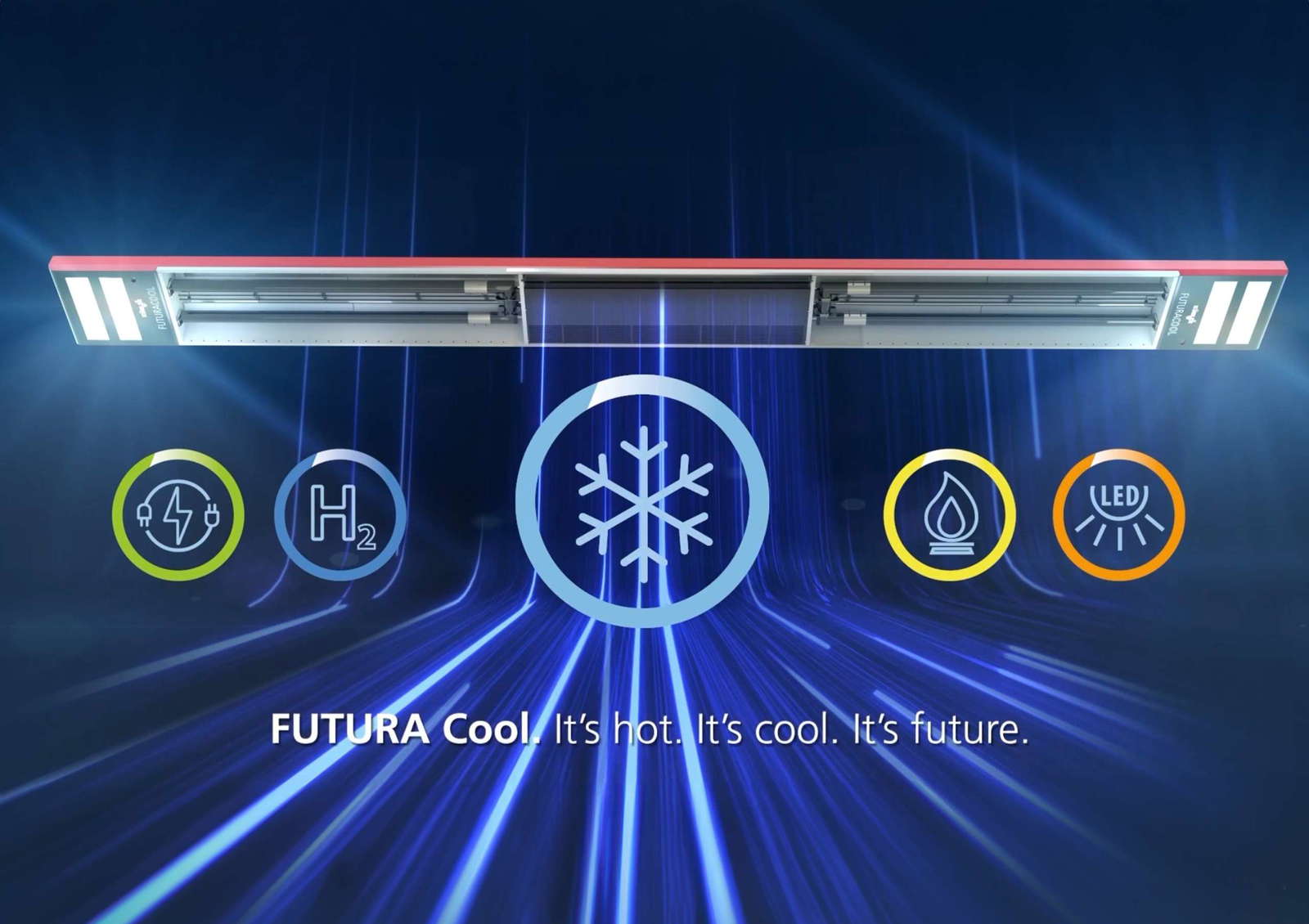"The energy-saving hall heating saves our club 47 %."
The traditional Grün-Weiss Mannheim club is one of the largest tennis clubs in Baden. The club has two tennis halls of its own and thus offers continuous training opportunities for the players. However, heating the two halls from 1952/53 and 1972 was increasingly becoming a financial burden for the club. The central oil heating system consumed between 30,000 and 35,000 liters of heating oil per year. Technical director Dr. Peter Ruckh saw an urgent need for action.
"Saving costs was our top priority. At the same time, however, we wanted a system that we could control individually, that protects the environment and gives our players a pleasant feeling of warmth," says Dr. Ruckh.
Energy-saving, climate-friendly, ball-proof - the new heating solution
The tip to take a closer look at the energy-saving infrared heaters from KÜBLER came from a neighboring sports club. They had had good experiences with the efficiency, control and comfort of these systems. Grün-Weiss followed this recommendation. Tailored to the conditions at Grün-Weiss, the 1,400 square meter and 6.8 m high total area has since been heated by six energy-saving OPTIMA infrared heaters - painted green to match the overall appearance of the hall. The high-performance devices are mounted high up under the roof and tested for ball impact safety in accordance with DIN VDE 0710 Part 13/05.31. Unlike conventional warm air blowers, where warm air is blown into the room and largely dissipates as warm air under the hall roof, the heat is very pleasant and efficient thanks to the infrared principle.
Each indoor court can be heated individually
Thanks to an intelligent control system, heating temperatures and switching times can be regulated via an LCD display in the hall vestibule - individually for each hall space. This needs-based adjustment of the hall heating to the different times of use has made it possible to tap into further savings potential.
Residual heat utilization for that extra efficiency boost
The waste heat from the infrared heaters is used for hydraulic-based heat generation. Up to 15 % of additional energy is thus available to the club almost free of charge for hot water preparation. At Grün-Weiss, this is used to heat the hall vestibule and support the hot water supply in the toilets and washrooms.
High savings - fast amortization
The low-noise heating system ensures a pleasantly tempered and draught-free indoor climate. However, the most important advantage for the Grün-Weiss Mannheim club is the economic viability of the system. The energy-saving heating system, demand-based control and the use of residual heat mean that the club can save a total of 47 percent. Dr. Ruckh concludes. "These savings give us important financial freedom for the youth work in our club."
-
The topics are as topical as they were in May, when Minister of Economic Affairs Daniela Schmitt presented the prestigious Rhineland-Palatinate Innovation Award to KÜBLER at the award ceremony. For FUTURA, the multi-energy-capable hall heating system with integrated lighting function. The company visit to the hidden champion and innovation leader for climate-friendly hall heating technology was therefore prepared well in advance. On Thursday, the Minister of Economic Affairs met with the Managing Director of the Innovation Agency Sabine Mesletzky and Managing Director Thomas Kübler at the company's site in Ludwigshafen.
-
Stadtwerke Frankenthal relies on high-efficiency technology and a healthy indoor climate.
-
Berlin, 14.03.2024 The energy-flexible new development FUTURA from hall heating specialist KÜBLER is the winner of the BVMW Future Prize 2024. Founder and Managing Director Thomas Kübler accepted the award in front of around 6,000 participants at the BVMW Future Day at Station-Berlin.
-
How to save 3.7 million kWh - almost 70 percent! - energy can be saved? This is demonstrated by the joint project of hall heating specialist KÜBLER and Höganäs Germany GmbH (formerly H.C. Starck) at the Laufenburg site near the Swiss border. For dena, this is a flagship project that the German Energy Agency is publishing on its new website as an example of good practice.






